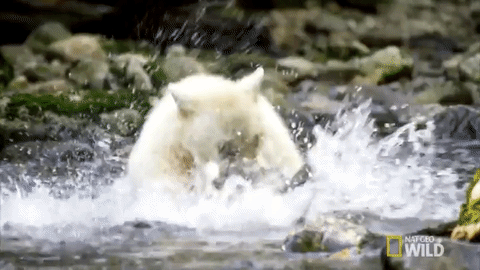With ten provinces and three territories that cover over 9.98 million square kilometers, Canada is a country like no other. This huge landmass, the second largest country in the world, encompasses diverse landscapes – boreal forests, millions of lakes, the Canadian Rockies (and these are just a few of the standout features).
It’s no surprise then that Canada is also home to many fantastic beasts. They live in the various climatically and topographically odd areas around the country, often thriving in places where people prefer not to live. And today, we’re going to investigate of these wonderful, truly Canadian, animals.

Beavers (Castor canadensis)
Beavers are the ultimate symbol of Canada. It’s even in their name! And as the second largest rodent in the world, they hold the same silver-medal in the size standings as Canada does.
Beavers are found all over Canada, but the largest population of beavers can be found right here in British Columbia. They like to occupy slow-moving streams, which they promptly modify with dams and lodges of their own construction. Fun fact, the largest beaver dam in the world is in Northern Alberta. It is over 850 meters long and is in such a secluded area that it was only discovered in 2007 by satellite photos.
Historically, beavers are known due to our brief habit of making them into fashionable hats. Nowadays, beavers are popular for another reason. They secrete a brown slime from sacs located under their tail that smells like musky vanilla. Known as castoreum, it is FDA approved as an additive in food and perfume (although it is almost exclusively used in the latter). So next time you get a lovely waft of vanilla, remember that you might actually be smelling a beaver butt.

Canadian Lynx (Lynx canadensis)
Another animal with a Canadian name, the Lynx is a stub-tailed, tuft-eared, nocturnal hunter. Well adapted to cold weather, they are usually found in northern Canada, staying in the boreal forests of The Yukon and Northwest Territories and avoiding the more open areas of Nunavut.
The Canadian Lynx is a specialist predator – it prefers to eat snowshoe hares, when they are available. This has led to an interesting cycle of abundance for the Lynx. Over the course of about 10 years, the population of the snowshoe hare tends to rise, peak, and finally suffer a dramatic fall. Peaks can be as high as 5000 snowshoe hares per 100 acres while falls can be as low as 70 per 100 acres. The lynx population, since it’s highly dependent on the snowshoe hare, will go through similar peaks and valleys that closely parallel that of the snowshoe hare.

Kermode bear (Ursus americanus kermodei)
Also known as the ‘Spirit Bear’, this rare bear is actually a subspecies of the American black bear. It is the official provincial mammal of British Columbia, living in the central and north coast regions of the province. They are not found anywhere else in the world.
Kermode bears are known for their creamy white fur, but they are not albinos. Rather, they are the result of a double recessive gene that is found only in their subspecies. Like other bears, Kermode bears enjoy hunting for salmon in streams, and their fur actually gives them a distinct advantage. The whiteness is less visible to the swimming fish, allowing them to be, on average, 30 percent more effective hunters than their darker-furred counterparts.

Moose (Alces alces)
An animal so nice they named it twice! Moose, the largest member of the deer family, are found throughout most of Canada. From the west to east coast, they enjoy living in boreal forests, on lake and stream edges, and in wooded hillsides. The only province they are not found on is Prince Edward Island.
The most famous feature of a moose is their impressive set of antlers, but there are other unique characteristics they are known for. For one, they are extremely tall, ranging from 5 to 6.5 feet at the shoulder, and can weigh over 540 kilograms (1200 pounds). Their hooves are also impressive. Long and sharp, they are often the moose’s first line of defense against predators.
This is not to downplay the impressiveness of a moose’s antlers. Antlers are typically around 18 kilograms (40 pounds) and having a full set would be like carrying a small child around on your head all day. These are some strong deer!
Like deer, Moose shed their antlers every year, and grow a new pair every spring. It’s a very bloody process, since a fine vascularized velvet covers the bone as it grows and provides important nutrients. When they’re done growing the moose scrape the velvet off, tearing the tiny blood vessels to clean their antlers. Metal!

.gif)